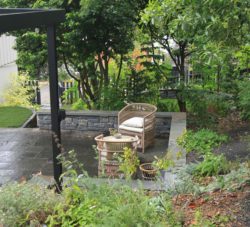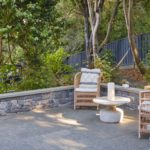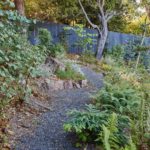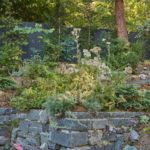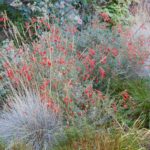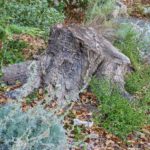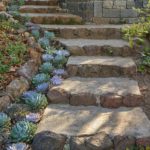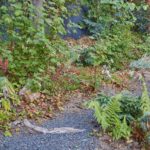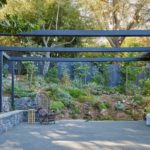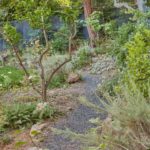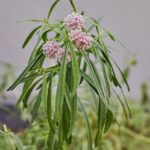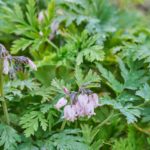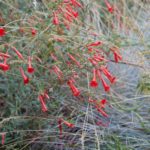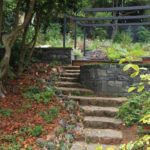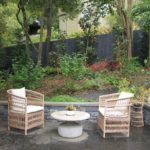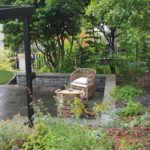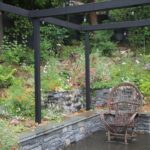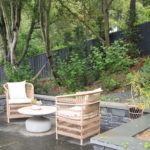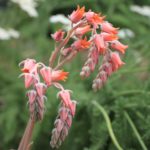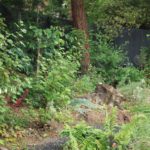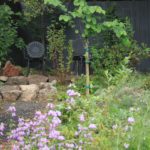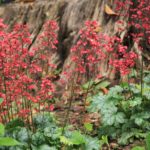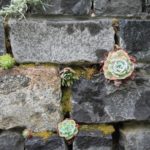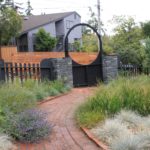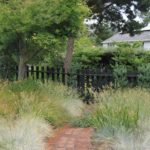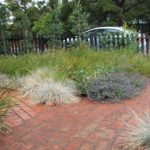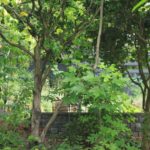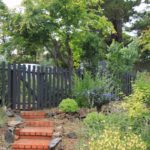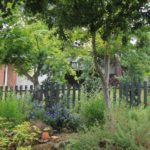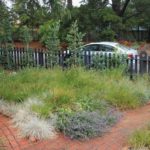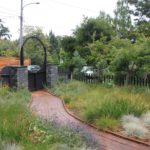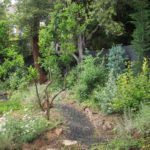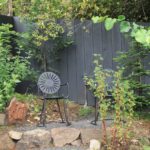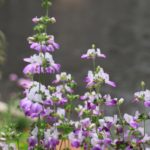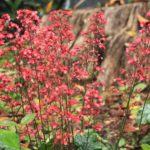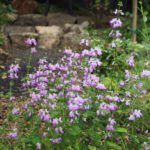Lot size: 2,000 sq. ft. front, 500 ft. parking strip, 500 sq. ft. side, and 3,250 sq. ft. back garden
Garden Age: Garden was installed in May of 2022
Years on the Bringing Back the Natives Garden Tour: New this year!
Note: This garden has steps of irregular height, many of which are made of stone with uneven surfaces; it should not be visited by those with balance issues.
Parking will be tight. Be prepared to park some distance away and walk to this garden. Watch for pedestrians walking to and from the garden. Do not block neighbor’s driveways.
Showcase Feature
The previous owner of this home was an avid birder who was interested in nature; Sherene wanted to continue that legacy.
The goal was to rewild this hillside garden by bringing back local native plants. The process began with clearing the dense thickets of ivy, Himalayan blackberry, cotoneaster, pyracantha, and other non-native, invasive plants that had enshrouded the property; the model was Knepp Farm in England, which transformed degraded farmland into natural areas, resulting in an astonishing return of wildlife.
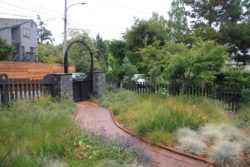 Christopher Reynolds, of Reynolds–Sebastiani Design Services, designed and installed this beautiful garden. Christopher’s hardworking crew installed cobblestone retaining walls with Connecticut blue capstones; renovated an old tool shed—turning it into a sunny potting room and a welcoming farmstand/reading room; created an expansive flagstone patio that connected the house and garden; unearthed long-buried paths; and constructed the welcoming entrance gate.
Christopher Reynolds, of Reynolds–Sebastiani Design Services, designed and installed this beautiful garden. Christopher’s hardworking crew installed cobblestone retaining walls with Connecticut blue capstones; renovated an old tool shed—turning it into a sunny potting room and a welcoming farmstand/reading room; created an expansive flagstone patio that connected the house and garden; unearthed long-buried paths; and constructed the welcoming entrance gate.
Christopher used CalScape to research which natives were local to the site—and then the planting began. The cheerful meadow in the sunny front garden contains foothill sedge, milkweed (the only plant on which the monarch butterfly can lay its eggs), Douglas iris, pearly everlasting (on which painted and American lady butterflies—and the amazing hummingbird-sized sphinx moths—can lay their eggs), and a variety of other low-growing, sun-loving plants.
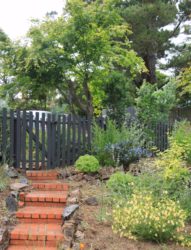 The lush, shady, and sloping back garden contains coast live oaks, manzanita, redbud, big leaf maples and redwood. In their shade is an understory of currants, coral bells, wild ginger, hummingbird sage, and sword and lady ferns, among other plants. Colorful wildflowers border the seating area, and a potpourri of happy succulents are tucked into crevices in the retaining wall
The lush, shady, and sloping back garden contains coast live oaks, manzanita, redbud, big leaf maples and redwood. In their shade is an understory of currants, coral bells, wild ginger, hummingbird sage, and sword and lady ferns, among other plants. Colorful wildflowers border the seating area, and a potpourri of happy succulents are tucked into crevices in the retaining wall
Other Garden Attractions
• Don’t miss the “before” photos!
• Drop down in one of the many seating areas in this peaceful oasis; you won’t want to leave.
Gardening for Wildlife
Bees, butterflies, moths, and hummingbirds frequent the garden. Peregrine falcons perch on the roof of the house, watching the avian action below with interest. As the pupa of many butterflies and moths over-winter in leaf litter, in this garden they “leave the leaves” to avoid throwing them into the green waste bin.
Garden Talks
12:00 “Be the change you want to see! Create a wildlife habitat in your own garden” by Christopher Reynolds
Keystone species (watch this talk by Doug Tallamy!)
Keystone species—our own, local ecological powerhouse plants—in this garden include oak, redbud, big leaf maples, currant, California lilac, hummingbird sage, and woodland strawberries.
Green Home Features
At least partially wheelchair accessible? No


